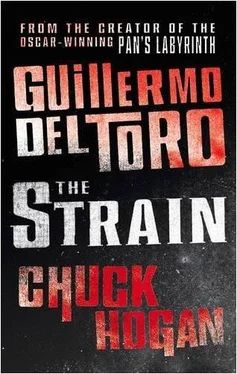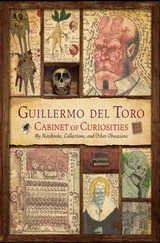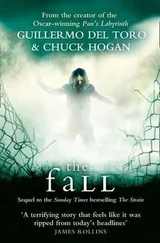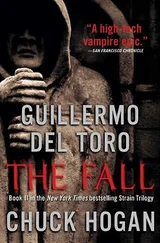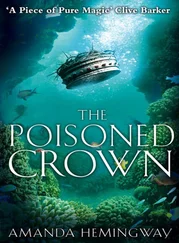Vasiliy remembered that apocalyptic September of 2001. A few days after the Twin Towers’ collapse, he had gone in with the health department, starting with the shuttered restaurants around the perimeter of the site, clearing away abandoned food. Then down into the basements and underground rooms, never once seeing a live rat, but plenty of evidence of their presence, including miles of rat tracks enshrined in the settled dust. He remembered most vividly a Mrs. Fields cookie shop, almost entirely eaten through. The rat population was exploding at the site, the concern being that the rats would spill out of the ruins in search of new food sources, swarming into the surrounding streets and neighborhoods. So a massive, federally funded containment program was undertaken. Thousands of bait stations and steel-wire traps were set down in and around Ground Zero, and, thanks to Vasiliy’s vigilance and that of others like him, the feared invasion never did materialize.
Vasiliy remained on a government contract to this day, his department overseeing a rat-control study in and around Battery Park. So he was pretty well caught up on local infestations, and had been throughout the beginnings of the construction project. And until now everything had been business as usual.
He looked down at the trucks pouring cement and the cranes moving rubble. He waited three minutes for a young boy to finish with one of the mounted viewfinders — the same kind they have on the top of the Empire State Building — then dropped in his two quarters and scanned the work site.
In a moment, he saw them, their little brown bodies scuttling out from corners, racing around stone piles, a few scampering hell bent for leather up the access road toward Liberty Street. Racing around rebar spikes marking the foundation of the Freedom Tower as though running a goddamned obstacle course. He looked for the breaks where the new construction would connect underground with the PATH subway. Then he turned the viewfinder higher and followed a line of them scrambling up the underpinnings of a steel platform along the east corner, clambering out onto strung wires. They were racing out of the basin, a mass exodus, following any escape route they could find.
Isolation Ward, Jamaica Hospital Medical Center
BEHIND THE SECOND DOOR of the isolation ward, Eph pulled on latex gloves. He would have insisted that Setrakian do the same, but another look at his crooked fingers made Eph wonder if it would even be possible.
They walked inside Jim Kent’s bay, the only occupied station in the otherwise empty ward. Jim lay sleeping now, still in his street clothes, wires from his chest and hand leading to machines whose readings were quiet. The attending nurse had said his levels were dipping so low that all the automatic alarms — low heart rate, blood pressure, respiration, oxygen levels — had to be muted, because they kept going off.
Eph pushed past the hanging curtains of clear plastic, feeling Setrakian grow tense beside him. As they got close, Kent’s vitals rose on all the readout screens — which was highly irregular.
“Like the worm in the jar,” said Setrakian. “He senses us. He senses that blood is near.”
“Can’t be,” said Eph.
He advanced farther. Jim’s vitals and brainwave activity increased.
“Jim,” said Eph.
His face was slack in sleep, his dark skin turning a putty gray color. Eph could see his pupils moving fast beneath his eyelids in a kind of manic REM sleep.
Setrakian drew back the last intervening layer of clear curtain with the silver wolf’s head of his tall walking staff. “Not too close,” he warned. “He is turning.” Setrakian reached into his coat pocket. “Your mirror. Take it out.”
The inside-front pocket of Eph’s jacket was weighed down by a four-inch-by-three-inch silver-framed mirror, one of the many items the old man had collected from his basement vampire armory.
“You see yourself in there?”
Eph saw his reflection in the old glass. “Sure.”
“Please use it to look at me.”
Eph turned it at an angle, so as to view the old man’s face. “Okay.”
Nora said, “Vampires have no reflection.”
Setrakian said, “Not quite. Please now — with caution — use it to look at his face.”
Because the mirror was so small, Eph needed to step closer to the bed, his arm outstretched, holding the glass at an angle over Jim’s head.
He couldn’t pick up Jim’s reflection at first. The image looked as though Eph’s hand were violently shaking. But the background, the pillow and bed frame, were still.
Jim’s face was a blur. It looked as though his head was shaking with tremendous speed, or vibrating with such force that his features were imperceptible.
He pulled his arm back fast.
“Silver backing,” said Setrakian, tapping his own mirror. “That is the key. Today’s mass-produced mirrors, with their chrome-sprayed backing, they won’t reveal anything. But silver-backed glass always tells the truth.”
Eph looked at himself in the mirror again. Normal. Except for the slight trembling of his own hand.
He angled the glass over Jim Kent’s face again, trying to hold it still — and saw the tremulous blur that was Jim’s reflection. As though his body were in the throes of something furious, his being vibrating too hard and too fast to be visibly rendered.
Yet to the naked eye he lay still and serene.
Eph handed it to Nora, who shared his astonishment, and his fear. “So this means…he’s turning into a thing…a thing like Captain Redfern.”
Setrakian said, “Following normal infection, they can complete their transformation and activate to feeding after just one day and night. It takes seven nights for one to fully turn, for the disease to consume the body and reshape it to its own end — its new parasitic state. Then about thirty nights to total maturity.”
Nora said, “Total maturity?”
The old man said, “Pray we don’t see that phase.” He gestured toward Jim. “The arteries of the human neck offer the quickest access point, though the femoral artery is another direct route into our blood supply.”
The neck breach was so neat it was not visible at the moment. Eph said, “Why blood?”
“Oxygen, iron, and many other nutrients.”
“Oxygen?” asked Nora.
Setrakian nodded. “Their host bodies change. Part of the turning is that the circulatory and digestive systems merge, becoming one. Similar to insects. Their own blood substance lacks the iron-and-oxygen combination that accounts for the red color of human blood. Their product turns white.”
“And the organs,” Eph said. “Redfern’s looked almost like cancers.”
“The body system is being consumed and transformed. The virus takes over. They no longer breathe. They respire, merely as a vestigial reflex, but they don’t oxygenate anymore. The unneeded lungs eventually shrivel and are readapted.”
Eph said, “Redfern, when he attacked, exhibited a highly developed growth in his mouth. Like a well-developed muscular stinger underneath the tongue.”
Setrakian nodded as though agreeing with Eph about the weather. “It engorges as they feed. Their flesh flushes almost crimson, their eyeballs, their cuticles. This stinger, as you call it, is in fact a reconversion, a repurposing of the old pharynx, trachea, and lung sacs with the newly developed flesh. Something like the sleeve of a jacket being reversed. The vampire can expel this organ from its own chest cavity, shooting out well over four and up to even six feet. If you anatomize a mature victim, you would find a muscular tissue, a sack that propels this for feeding. All they require is the regular ingestion of pure human blood. They are maybe like diabetics in that way. I don’t know. You are the doctor.”
Читать дальше
